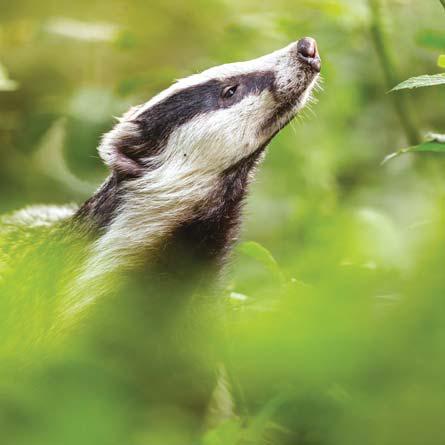Try GOLD - Free
KILLER INSTINCT
The Week Junior Science+Nature UK
|Issue 78
Step into the wild - if you dare - with JD Savage to discover how nature's ultimate predators use astonishing skills and cunning tactics to catch prey and dominate their domains.
-

A tiger’s striped coat blends into the surrounding jungle as the muscular big cat prepares to pounce. In the ocean, an orca coordinates with its pod (group) to outsmart its prey. In the sky, a peregrine falcon, a soaring solo slayer, suddenly dives from dizzying heights at over 200 miles per hour to strike an unsuspecting bird in mid air. These are some of the animal kingdom’s top predators, and each has a unique set of skills and strategies to bring down their prey. Predators are any animals that hunt and kill another species for food. None kill for thrills, it’s simply a matter of survival.
The food chain starts with plants and tiny creatures that small animals eat. These, in turn, become meals for larger carnivores (meat-eaters). At the very top of the chain are the apex predators. These are nature’s ultimate hunters – the creatures that have no natural enemies. Their unmatched hunting skills mean that they rule their habitats. If you’re a small, vulnerable animal you would be keen to avoid them.
Here’s the bad news, though. Apex predators are almost everywhere – in hot deserts, icy polar climates, rainforests, lakes and oceans, on mountain tops and even underground. Badgers are the UK’s largest land predators, mostly burrowing into the ground to catch creatures that live below the surface – a menu that may include several hundred earthworms a night.
Super-senses
Apex predators have their own specially adapted senses that are practically superpowers. Tigers and leopards have superior night vision for hunting under cover of darkness, while badgers use their superior sense of smell to target prey.
This story is from the Issue 78 edition of The Week Junior Science+Nature UK.
Subscribe to Magzter GOLD to access thousands of curated premium stories, and 10,000+ magazines and newspapers.
Already a subscriber? Sign In
MORE STORIES FROM The Week Junior Science+Nature UK

The Week Junior Science+Nature UK
Make square bubbles
Build a frame to capture straight-edged bubbles.
1 mins
December 2025

The Week Junior Science+Nature UK
Smart scientists win big
The Nobel Prize rewards some of the world's brightest minds in science - as well as literature, economics and peace for their discoveries.
1 min
December 2025
The Week Junior Science+Nature UK
Build a memory game
Test the power of your mind with this colour-changing brain game.
2 mins
December 2025

The Week Junior Science+Nature UK
Celebrating a hero
Remembering Dr Jane Goodall, who devoted her life to the study and conservation of chimps.
2 mins
December 2025

The Week Junior Science+Nature UK
Wildlife watch
Jenny Ackland discovers the wonders of nature you can spot this month.
2 mins
December 2025

The Week Junior Science+Nature UK
Make mini cottage pies
Cook up a winter warmer that will feed your whole family.
1 mins
December 2025
The Week Junior Science+Nature UK
HOLY ROLLER
The Kiruna Church was once voted Sweden's most beautiful pre-1950 building.
1 min
December 2025

The Week Junior Science+Nature UK
BIONIC BEINGS
Patrick Kane welcomes you to a future of superhumans, where people and robots combine.
4 mins
December 2025

The Week Junior Science+Nature UK
The world goes green
Renewable energy produced more electricity worldwide than coal in the first half of 2025, according to a report from research group Ember.
1 min
December 2025
The Week Junior Science+Nature UK
STORM IN HEAVEN
This photograph shows an enormous thunderstorm cloud glowing pink against a deepening blue sky. Called Eruption in the Sky, it was the winner in the young category of the Standard Chartered Weather Photographer of the Year Competition 2025, run by the Royal Meteorological Society.
1 min
December 2025
Listen
Translate
Change font size
